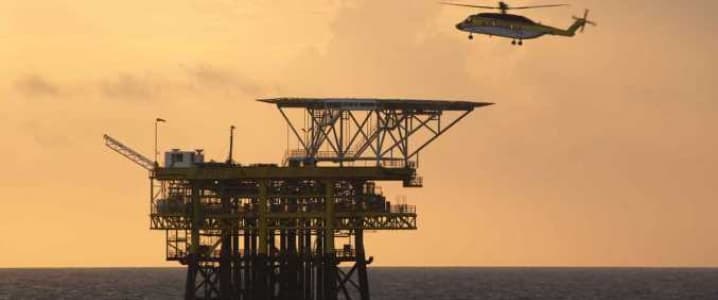Today's EIA report has left oil prices flat-footed, as crude inventories were in line with consensus, while a(nother) gargantuan build to gasoline stocks has not been enough to drag the complex lower (...has only served to keep it in check). Hark! Here are five things to consider in oil and energy markets today:
1) While we highlighted on Monday that the U.S. imported over 1.8 million barrels per day from the Arab Gulf last year, and yesterday how the U.S. imported 1.6mn bpd from South America, let's turn our attention to West Africa.
Our ClipperData show that flows from West Africa to the U.S. were close to 280,000 bpd last year. Nigeria is the leading source, with volumes predominantly heading to the East Coast. Despite geopolitical tension, the U.S. received nearly 200,000 bpd of Nigerian crude last year, up 15 percent on the year prior.
Angola is the second leading source, averaging over 70,000 bpd, sending mostly medium and heavy crude (whereas Nigerian sends predominantly light crude). Because of this tilt towards heavier grades, the majority of Angolan crude goes to U.S. Gulf Coast refiners, who are more geared towards refining it. Heavy sweet Dalia crude accounts for over 40 percent of all Angolan crude into the U.S., followed by medium sweet Clov:
(Click to enlarge)
2) After a counter-seasonal jump higher to start the year, refinery runs have dropped considerably for a second consecutive week, falling in line with the seasonal trend as maintenance gets underway. The majority of the decline in refining activity occurred on the Gulf Coast, with crude inputs dropping 390,000 bpd, but lesser imports meant that stocks for the region only built by 900,000 barrels.
The majority of this week's build occurred on the East Coast, boosted by imports. Hark, crude inputs are now just above 16mn bpd, still well above last year's level (in itself the 5-year high), but is building up a head of steam for continued move lower:
(Click to enlarge)
3) This chart from the FT today highlights the extent of the Gulf Cooperation Council's (GCC) mission to raise cash amid the oil price crash of recent years. As lower oil prices have dramatically crimped the coffers of the six members of the GCC - Bahrain, Kuwait, Oman, Qatar, Saudi Arabia and U.A.E. - they have raised $66 billion dollars in international bond issuances. Saudi led the charge with a $17.5 bln issuance last year, and is earmarked to issue a further $10 bln as early as March.
Moody's estimate the aggregate deficit across the GCC this year is set to be ~7.5 percent of GDP, indicating the likelihood of even higher bond issuance. Moody's also estimates that debt-to-GDP across the region is to reach 32 percent, up from just 10 percent in 2014. All this leaves economic growth for the region set to be around 1.6 percent this year.
(Click to enlarge)
4) Just as we are seeing with the capex of U.S. producers, and just as we expect to see with global conventional oil and gas discoveries, Canadian drilling is expected to pick back up this year, after being in the doldrums (hark, below).
As oil prices have pushed higher, renewed optimism in the oil patch is manifesting itself in increasing activity and investment. Not only are more wells expected to be drilled, but capex is rising. MEG Energy plans to spend C$590 million in 2017, nearly five times more than last year, while Cenovus and Canadian Natural are moving forward with a project expansions.
After oil companies cut capex in half over the last two years, investment is returning and the rig count is rising - now up 40 percent since a year ago. A rebound in activity is breathing life into both employment and the economy as a whole; after 110,000 jobs were lost from 2014 to April 2016, hiring is rebounding, while Alberta's economy is projected to grow by 2.1 percent this year, after two years of contraction.

5) Finally, the chart below illustrates that certain regions of India are primarily still without electricity. Some fifty million rural homes, accounting for 240 million Indians, are still without power; this is due to electricity being 'unaffordable, inadequate, or simply unavailable'.
ADVERTISEMENT
A World Bank study from 2014 said that 300 million in India were without power, something new Prime Minister Modi committed to rectify ahead of his election in the same year. Some 18,452 villages were without electricity, according to an audit in 2015. Although data suggest this number has fallen by a third, the definition of 'electrification' is a loose term, and appears to be vastly overestimated.
A lack of infrastructure is dragging on implementation - both because it isn't an attractive business opportunity (due to low usage and below-cost tariffs) and because of theft, which accounts for a loss of one quarter of electricity flows.
(Click to enlarge)
By Matt Smith
More Top Reads From Oilprice.com:
- Keystone XL Still Faces Obstacles Even With Trump’s Approval
- Is Libya A Bigger Threat To Oil Prices Than U.S. Shale?
- Expect A New Shale Boom This Spring






















